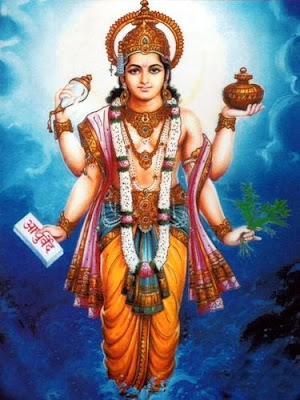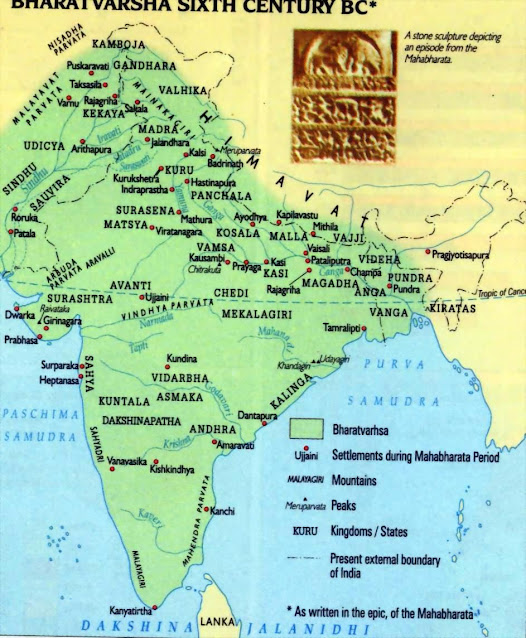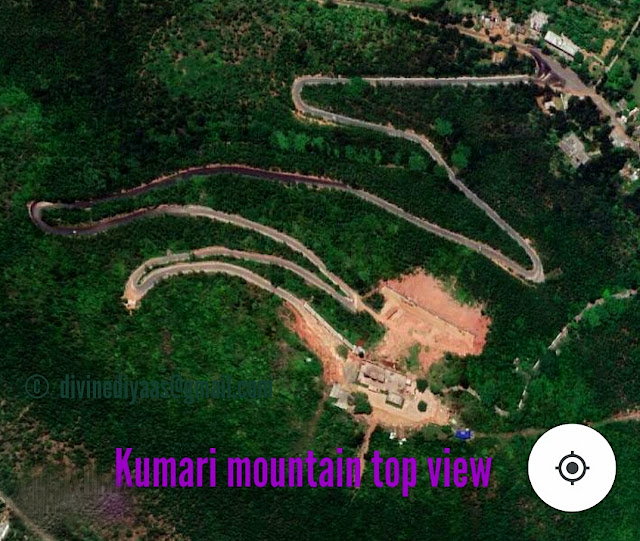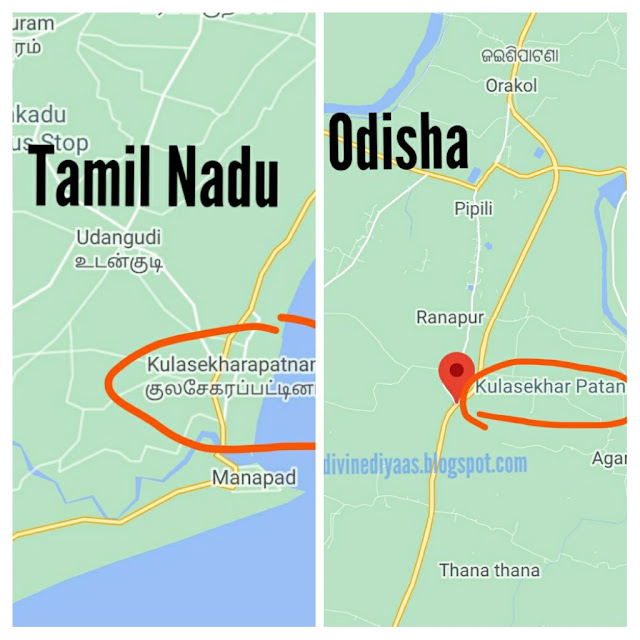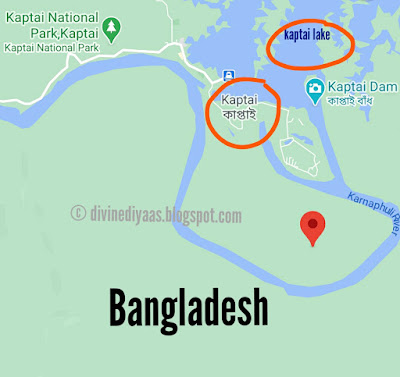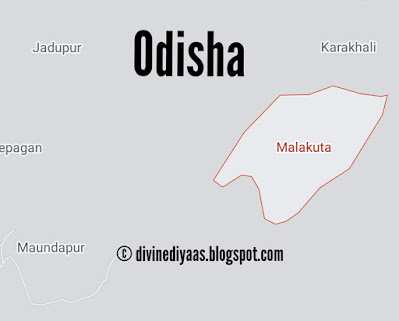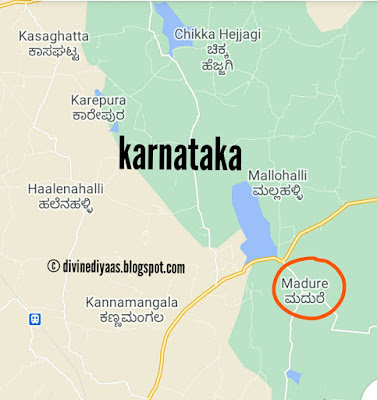KURMA AVATAR OF LORD VISHNU
During Satya Yuga, Lord Vishnu took his second avatar called as 'Kurma' / 'Korma' avatar, Kurma meaning tortoise. Lord Vishnu took a form of tortoise to save Devas and humans from fiercely Asuras. This incarnation of Vishnu is also described in story called 'Samudra Manthan'. 'Samudra' means ocean, Manthan means Churning, Mathanam means 'to churn' .
In Lord Vishnu's 'Dasavatar' (Ten Avatars), First Avatar is - Matsya Avatar. Lord Vishnu took a form a Dolphin, saved the Earth from great deluge and established Satyavrata, a Pandya King as next manu - Vaivasvata Manu. To know more about Matsya Avatar of Lord Vishnu, reach out to
https://divinediyaas.blogspot.com/2020/05/pandya-king-satyavrata-and-matsya.html
Kurma Avatar - This is the second avatar and the story about his kurma avatar is mentioned in many puranas such as Vishnu Purana, Bhagavad Purana, Padma Purana, Agni Purana, Mahabharata and Ramayana.
Lord Vishnu incarnated as giant turtle to save earth from great destruction. This story is about getting 'Amrit' (Nectar of immortality) and winning good over evil. Devas (Gods) and Asuras (Demons) fight with each other to get the nectar of immortality - Amrit.
The story of Kurma Avatar / Samudra Manthan, starts from 'Durvasa Maharishi', the great legendary Rishi and Indra, King of devas, God of rain, lighting and thunder.
Once Indra Deva was riding on his white elephant 'Airavata', he came across the Great Sage Durvasa Muni and the sage offered him a garland given by Lord Shiva. Indra accepted the garland and placed on his elephant's truck.
But Airavata elephant crushed the garland by stomping on it. Enraged Sage became furious and cursed Indra that all the devas will lose their immortality, fortune and power. Due to the sage's curse, devas became weaker and lost the battle with asuras with asura king Bali, then asuras took control of all the three worlds. Due to supremacy gained in all the three worlds, asuras in arrogance caused numerous destructions everywhere which was leading to great danger for Earth.
Devas ran to Lord Vishnu, the preserver to help them from the curse of the sage Durvasa. Lord Vishnu offered a solution for the curse "To defeat Asuras, you will have to strive hard and obtain Amrit (Nectar of immortality) by churning the Ocean and Amrit will give back your lost power and becoming immortal".
On hearing this, Indra asked Lord Vishnu that how could to churn the milky ocean ?
Lord Vishnu replied, "Churn the milky ocean by adding herbal plants and grasses, to get Amrit. Use Mandara Mountain (Meru Mountain) as churning dasher and serpent king Vasuki as rope to churn the ocean. In tamil, it is called as 'Mathu' / 'Mathanam'. Now, you all got to know source of these words 'Samudra Manthan' !!
To obtain 'Amrit' and to regain the power, devas needs to churn the ocean of milk. But devas were very weak to churn the ocean with huge mountain as churner. So they asked Lord Vishnu about this, Vishnu replied, " Take help of Asuras and use them to achieve your goal. REMEBER TO BE CAREFUL ! You must not desire to have any of the priceless things that comes out of the Ocean and not to vent out anger if those were forcibly taken by Asuras."
Indra asked "But what about Amrit ? What if the Asuras took that from us?". Lord Vishnu assured Devas that Asuras will not get the nectar. Indra agreed to Lord Vishnu and went to meet Asura King Bali. He convinced Asura king Bali that if they offer help to churn the ocean, they can share the amrit as a result of their help.
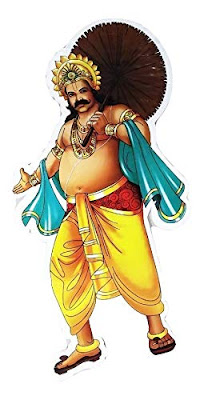 |
Asura King Bali
|
Devas and Asuras tried hard in uprooting Mandara mountain and carrying it to the milky ocean 'Paar Kadal', the place where Lord Vishnu reclines on Shesha Naga along with his consort goddess Lakshmi. Devas and asuras started to churn the ocean to get the amrit, using huge mountain Mount Meru / Mandara as churning dasher. But, when the churner entered into the water, it kept sliding into the depth of the ocean. As there was no support at the bottom of the mountain, it started to sink by crushing large number of Devas and Asuras under it. On seeing this, Indra prayed to Lord Vishnu for help.
Lord Vishnu said, "I'll take a form of Kurma (Tortoise) and hold Mandara mountain on my back until the milky ocean is fully churned and nectar is obtained".
To balance the churner into the ocean, Lord Vishnu came into rescue and took 'Kurma' avatar (tortoise form), upon which mount Meru is placed to balance it. Lord Vishnu asked five headed Vasuki, the King of serpents, which is around Lord Shiva's neck, "Play your role and you shall receive your share of nectar. Mount Mandara will not hurt you". Thus, Vasuki snake was used as rope around the mountain to churn.
Lord Vishnu had a plan and suggested Indra to tell asuras to hold the tail and devas will hold head of Vasuki serpent. Asuras got insulted as they have been told to hold tail and also suspected a foul play, so they readily walked towards Vasuki's head and held the head for churning process. Lord Vishnu's reverse psychology worked, he intentionally asked gods to say like that as the Vasuki's head portion will be heavy to churn and importantly Vasuki will spit fire venom, which will be hard to withstand.
With full of anticipation and joy, Devas at the tail side and Asuras at the head side started churning the ocean. Soon, Asuras learned that they have been deceived by Devas, as the poison coming out from Vasuki's mouth was weakening them. So, to save themselves from the poison, they rigorously churned the mountain , vasuki serpent vomited enormous amount of powerful venom in the ocean and it formed like thick foam layer.
This HALAHAL venom is very poisonous, it's the concentrate of all the impurities from the ocean. The Poisonous fumes choked Devas , Asuras and Humans, it will kill all the living beings in the ocean and it can cause for the end of the world as well. So, they were all scared and ran to Lord Shiva at Mount Kailash for help.
Only Lord Shiva, the Supreme being can survive the power of poison and save the world. So, he took the venom on his conch and drank it up completely. Goddess Parvati witnessing this situation and pressed Shiva's throat with her hands so that the poison will not go into his stomach. Thus all the venom stayed there in his throat causing blue colour, so he is called as 'Neel Kanthan' (Neel - blue and Kanth - Throat).
Once all the poison was removed from the ocean, Devas and Asuras started to churn the ocean again. While churning the ocean, first 13 Ratnas were emerged from the ocean, these gems were accepted by Lord Shiva for consuming the poison. Followed by Goddess Lakshmi emerged from the ocean, Lord Vishnu accepted Goddess Lakshmi, the god of fortune and wealth, as his consort.
Followed by
Apsaras (Divine Nymphs) - like Ramba, Menaka are emerged from the ocean, accepted by various demi gods (Gandharvas) as their consort.
Varuni - accepted by Varuna, God of water.
Kamadhenu - the divine wish granting cow, taken by Lord Vishnu and gave it to sages. The ghee which comes out of her milk will be used for Yajnas.
Airavata - White elephant, taken by Deva King Indra
Ucchaishravas - Seven headed horse, taken by Asura King Bali.
Kaustubha - the most valuable and precious ratna (gem) in the world, as the devas and asuras started fighting for this jewel, Lord Vishnu worn that as an adornment on his chest.
Parijat - a divine flowering tree, Parijat flower gives out sweet perfume which will never fade and has medicinal properties - taken by Devas to Indraloka (abode of Indra)
Sharanga - a divine bow emerged from the ocean, symbolic of weapons - taken by asuras.
Kalpavriksha - a divine, movable wish granting tree, which has numerous medicinal properties, taken by Gods to Indraloka.
Chandra - the moon, adorns Lord Shiva's head
Shankha - a divine conch, taken by Lord Vishnu
Jyestha - goddess of misfortune, opposite of Lakshmi, taken by asuras.
Both Devas and Asuras were losing their patience in churning the ocean, then finally emerged God 'Dhanwantri' with a pot of nectar in his hand. This was celebrated as 'Dhanteras' as God Dhanwantri has emerged from the milky ocean, but in today's world it's been twisted to celebrate for Wealth. There is no relation between wealth and Dhanteras. For more about Dhanwantri - God of Ayurveda, reach out to
On Seeing God Dhanwantri with Amrit on his hand, Asuras ran towards the god and grabbed the pot of nectar from him. Asuras were fighting among among themselves for the possession of that pot. Devas watched this in dismay, as they have accepted Lord Vishnu's command that they neither vent out anger nor quarrel for things coming out from the ocean.
Now, Lord Vishnu's vahana, the divine eagle 'Garuda' which is bigger in size, snatched the pot from asuras and flew away. While flying 4 drops fell on 4 places of earth, Prayag, Haridwar, Ujjain and Nasik. However, asuras got hold of the vessel again.
Lord Vishnu pacified Devas, "Don't be dejected, the greed of Amrit has already divided Asuras and now I shall charm them with mu power and will give you the nectar".
Lord Vishnu incarnates himself as 'Mohini' avatar, a supreme beautiful lady, danced and distracted asuras.
"Who are you beautiful lady", asked Asura King Bali.
Mohini smiled and replied, "I'm Mohini. I have come to distribute the Amrit among all of you and you must do as I ask you to do".
Mohini suggests asuras that she will divide the drink equally between devas and asuras. Mesmerized asuras entrusted Mohini and gave the jar of Nectar to her.
Asuras agreed to her proposal. Mohini then asked Devas and Asuras to take bath and assemble in a row, Asuras in one row and Devas in another row. When they all had assembled in a row, Mohini had began to serve the Amrit to Devas first. Upon seeing this, Asuras got anger but thought that Mohini will be displeased if we unnecessarily create an issue and object her. So, they kept quiet.
Mohini distracted the asuras using Maya (illusion so that she swaps the vessel every time when she serves demon) and distributed among devas, they drank the Amrit. Mohini kept Asuras under her spell. But one of Asura Swarbhanu found this as fishy. He quietly sneaked into the rows of Devas using illusion by disguising himself as Devas and received his share of Amrit. But, before he could gulp it down completely Surya (Sun god) and Chandra (Moon god) identified him and shouted to Mohini.
Lord Vishnu in the form of Mohini used Sudharshan Chakra (Spinning disc) and cut his head in one shot before he complete it. But, by the time Lord Vishnu cut his head, he has already become immortal as he drank few drops of the nectar. Therefore by achieving immortality, he became two beings, his head as RAHU and his body as KETU. After finishing this task, Lord Vishnu flew away on his Garuda.
Asuras were so surprised and shocked to see Mohini as Lord Vishnu and no nectar was left for them. Devas were filled with energy and the curse of Sage Duvasa was lifted. Furious Asuras declared war with Devas. As Devas regained their lost power, they won the battle effortlessly and drove the asuras away.
Since the Rahu and Ketu were deprived of Amrit, they developed strong enmity against Sun and Moon. The nodal points of Moon is called as Rahu and Ketu. Rahu is north lunar node and Ketu is South lunar node causing Solar and Lunar eclipses, as they developed enmity against these two gods.
Ketu deals with past and present karma, while Rahu deals with future. Sun, Moon and Earth are highly influential in the life of a Humans. Moon have direct impact on the neurons of our body, the interaction between mind and Body. It also controls our stress levels and blood circulation in the body.
In Hinduism, before starting anything good will check Rahu Kalam, we won't start / do any auspicious things during that time. Will write a separate post about Rahu and Ketu.
In this avatar Lord Vishnu revived the lost glory of Devas and saved Devas, Earth and Humans from the destructions caused by Asuras. He has helped devas twice, first as Kurma avatar which supported as a base for Mandara mountain to churn. Next, he disguised as 'Mohini', a beautiful young lady to take of nectar (Amrit) and to serve among Devas and Asuras. Those who sought refugee in Vishnu they will be protected and saved.
This story is also representing multiple symbolic messages like Good over evil, Like Devas and asuras (Positive and negative cosmic forces) churned the ocean to get Amrit, we humans vibrate our soul and body in same frequency to get higher consciousness and self realization is the ultimate goal of consciousness.
 |
| Kurma Avatar at Srirangam Temple |
 |
| Vittala temple |
This Samudra Manthan story is depicted in sculptures at many places all over the World such as Angkor Wat temple of Cambodia, temples of Indonesia, Thailand and many other ancient places.
 |
Angor Wat Temple, Cambodia
The significance of nine planets, Navagraha that were identified and worshipped by ancient sages, detailed information about Rahu and Ketu will be written in different posts.
|
- Aarthi Thiyagarajan








